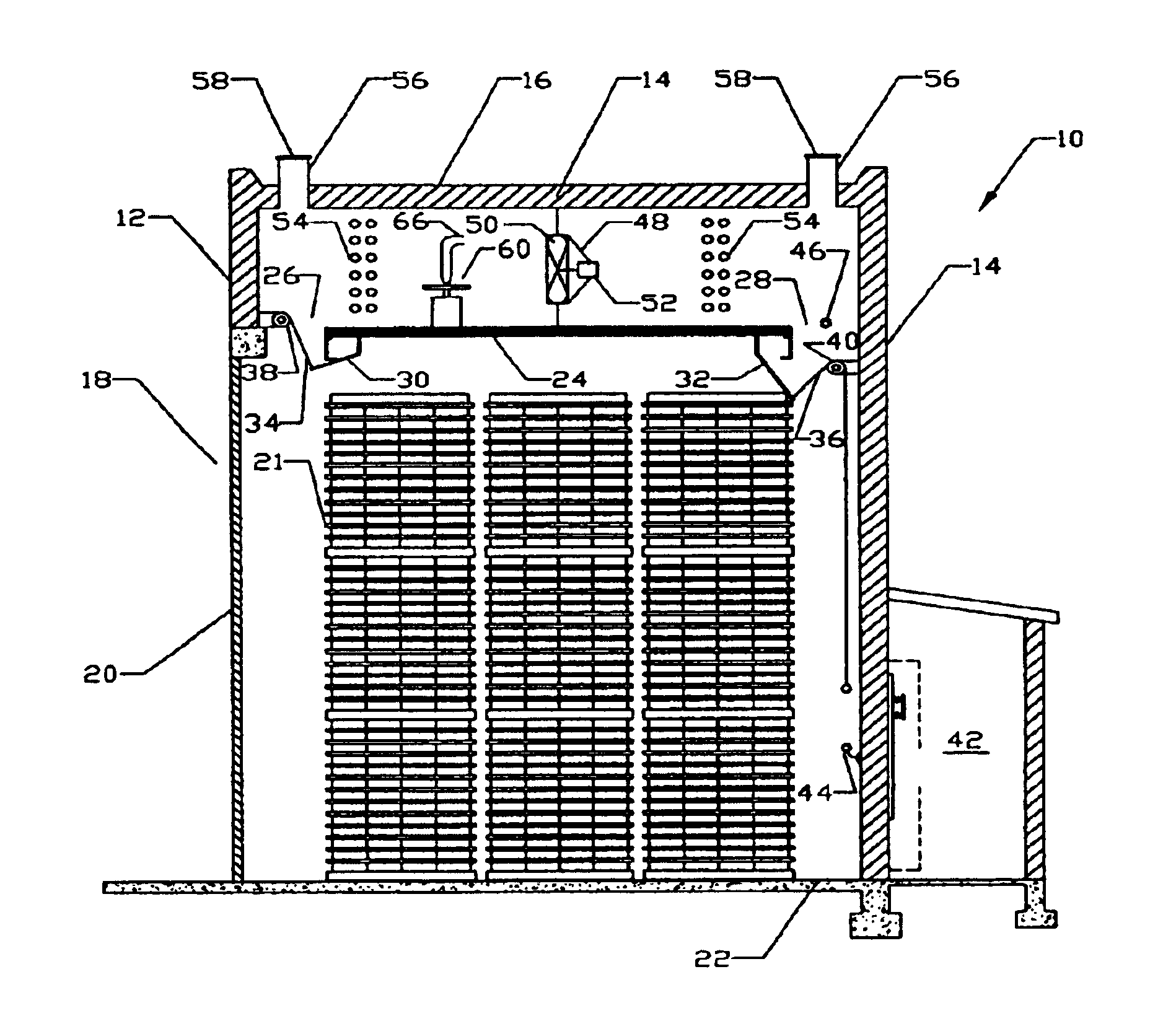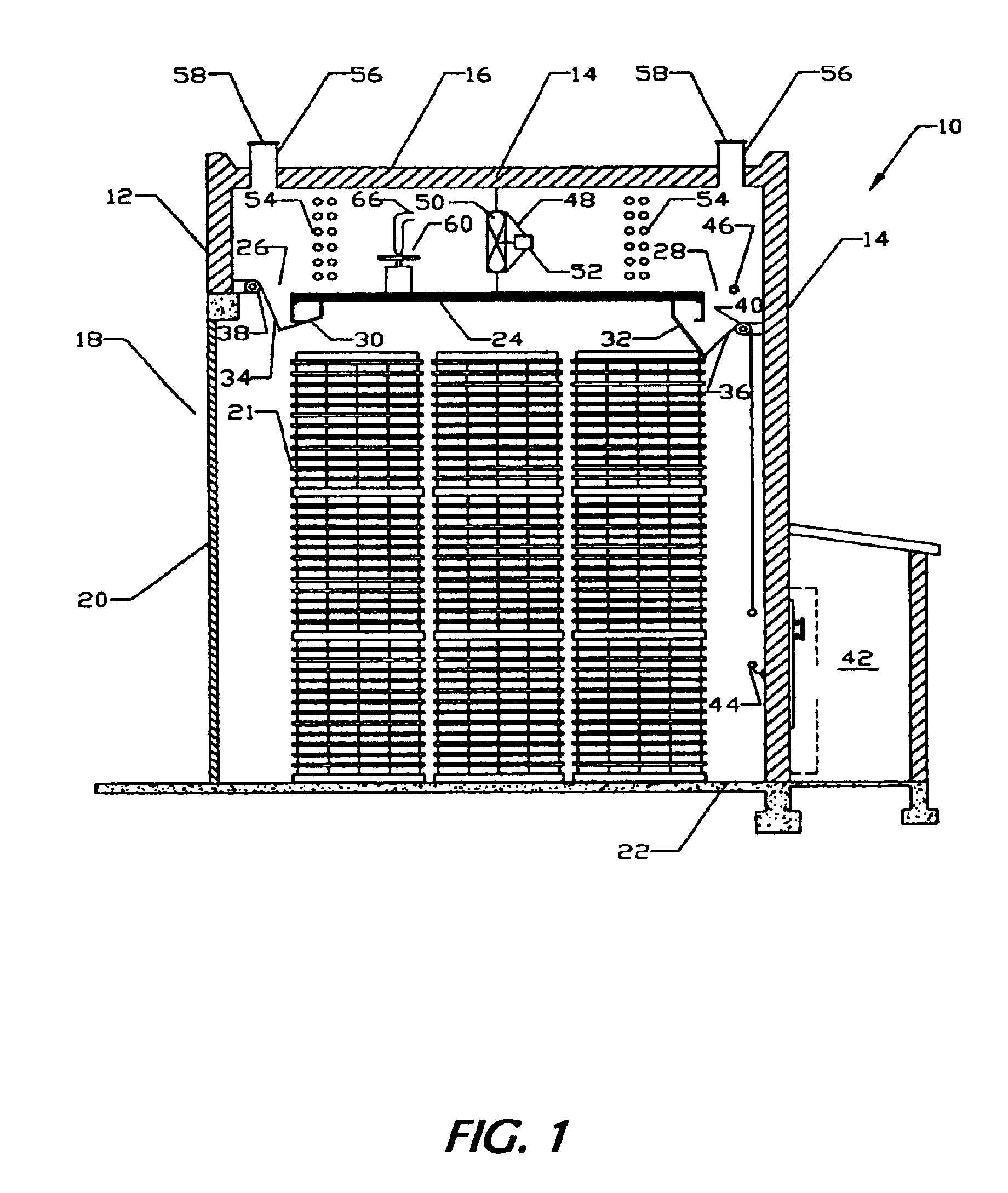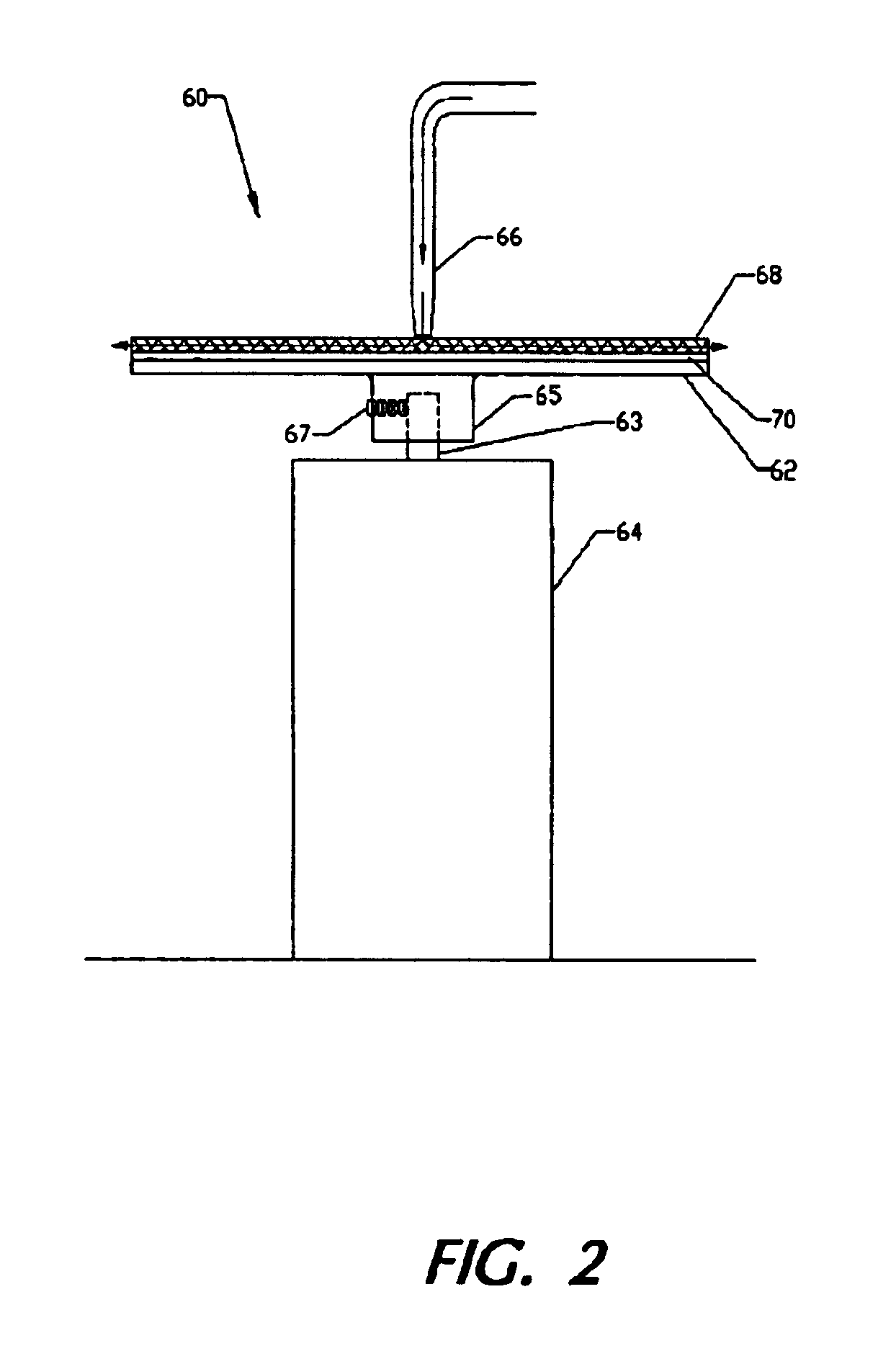Humidity generating system and method and use in wood drying kiln
a technology of humidity generation system and drying kiln, which is applied in drying machines, lighting and heating apparatus, furniture, etc., can solve the problems of wood surface dries out more quickly, checking, cracking, crazing or warping, and checking the surface of wood
- Summary
- Abstract
- Description
- Claims
- Application Information
AI Technical Summary
Benefits of technology
Problems solved by technology
Method used
Image
Examples
Embodiment Construction
Disk 62 may have a diameter of approximately 10 inches (25.4 cm) and a thickness of approximately 0.2 inch (0.5 cm). A non-woven fabric made of a hydrophilic material or a woven cloth, such as one made from cotton may be adhered to disk 62 by a water resistant epoxy, of a type well known in the art. The disk 62 may be rotated at 3600 rpm by a totally enclosed, fan cooled, fractional horsepower motor of a type well known in the art, suitable for high temperature applications. Such motors are readily available from a number of manufacturers. At this speed of rotation, the mist formed will be distributed about a theoretical particle diameter of approximately 18 microns. This distribution will be maintained as long as the rate at which water is deposited on disk 62 does not significantly approach a maximum rate Q.sub.(max) defined in the abovementioned U.S. Pat. No. 4,604,109 to Koslow. In this example Q.sub.(max) is approximately 10 gallons (40 liters) per minute.
Such small water parti...
PUM
 Login to View More
Login to View More Abstract
Description
Claims
Application Information
 Login to View More
Login to View More - R&D
- Intellectual Property
- Life Sciences
- Materials
- Tech Scout
- Unparalleled Data Quality
- Higher Quality Content
- 60% Fewer Hallucinations
Browse by: Latest US Patents, China's latest patents, Technical Efficacy Thesaurus, Application Domain, Technology Topic, Popular Technical Reports.
© 2025 PatSnap. All rights reserved.Legal|Privacy policy|Modern Slavery Act Transparency Statement|Sitemap|About US| Contact US: help@patsnap.com



